

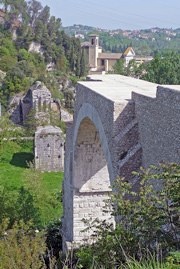
View of Santa Maria del Ponte
from Ponte di Augusto
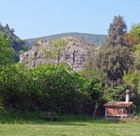
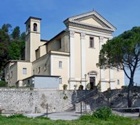
The facade, which was damaged by bombs in the Second World War, was rebuilt in 1946.
Interior
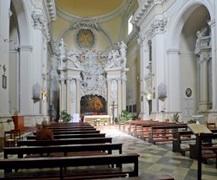
As noted above, the original chapel survives behind the Baroque high altar of the church.
Frescoes of the Chapel
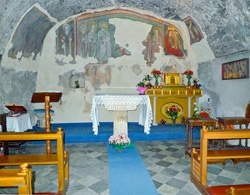
Madonna and Child
The fresco was detached in 1754 and taken in procession to the Duomo, where Cardinal Carlo Maria Sacripante crowned the figures using golden crowns donated by the Chapter of St Peter's, Rome. The fresco was then returned to its original location on the right of the back wall of the chapel.
There is a free copy of this fresco in the Cappella della Madonna del Ponte in San Giovenale.
Christ Enthroned with Saints
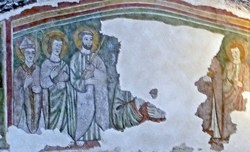
These fragments belonged to a fresco that originally covered the back wall. At the centre was a large figure of Christ enthroned, but only His right arm and left hand survive. There were originally three saints to each side:
-
✴St Juvenal, another male saint and St Peter to the left; and
-
✴two lost figures and St John the Evangelist to the right.
Other Frescoes
Other surviving frescoes include:
-
✴on the back wall:
-
•Antony Abbot, to the left of the main fresco; and
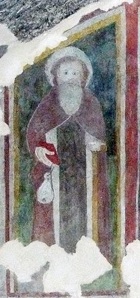
-
•the Madonna and Child and St Michael, below it; and
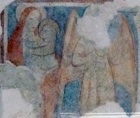
-
✴side walls:
-
•part of a fresco of the Crucifixion with the Virgin and St John the Evangelist, on the right; and
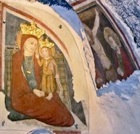
-
•very damaged frescoes of St Michael and a bishop saint, on the left.




